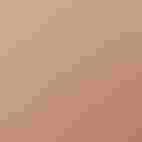Summer Tanager
At a Glance
A languid song in southern woods, sounding like a lazy robin, is the voice of the Summer Tanager. Seeing the bird may require some patience, because it usually moves rather slowly in the treetops, often remaining hidden among the leaves. At times, however, it flies out conspicuously to catch flying insects in mid-air. This bird apparently has no fear of stinging insects, often raiding wasp nests and occasionally becoming a minor nuisance around beehives.
All bird guide text and rangemaps adapted from Lives of North American Birds by Kenn Kaufman© 1996, used by permission of Houghton Mifflin Harcourt Publishing Company. All rights reserved.
Category
Perching Birds, Tanagers
IUCN Status
Least Concern
Habitat
Arroyos and Canyons, Forests and Woodlands, Shrublands, Savannas, and Thickets
Region
California, Eastern Canada, Florida, Great Lakes, Mid Atlantic, New England, Plains, Rocky Mountains, Southeast, Southwest, Texas
Behavior
Direct Flight
Population
12.000.000
Range & Identification
Migration & Range Maps
The wintering range is surprisingly extensive, from central Mexico to Bolivia and Brazil. Migrates north and south on a broad front, with some crossing Gulf of Mexico and others traveling overland.
Description
7-8" (18-20 cm). Adult male bright rosy red all year. Young males may be patchy yellow and red. Female rich yellow, less greenish than female Scarlet; note large pale bill, plain wings.
Size
About the size of a Robin, About the size of a Sparrow
Color
Black, Green, Red, Yellow
Wing Shape
Rounded
Tail Shape
Notched, Rounded, Square-tipped
Songs and Calls
Song like an American Robin's, but softer and sweeter. Distinctive rattling chick-tucky-tuck.
Call Pattern
Falling, Rising, Undulating
Call Type
Chirp/Chip, Whistle
Habitat
Woods, groves (especially oaks). In the Southeast, breeds in dry open woods, especially those of oak, hickory, or pine. In the Southwest, breeds in cottonwood-willow forests along streams. Winters in the tropics, mainly in lowlands but also up to middle elevations in mountains, both in solid forest and in edges and clearings with scattered trees.
Sign up for Audubon's newsletter to learn more about birds like the Summer Tanager
Behavior
Eggs
3-5, typically 4. Pale green or blue-green, with brown and gray spots sometimes concentrated at larger end. Incubation is apparently by female only, 11-12 days.
Young
Both parents feed the nestlings. Age at which young leave the nest is not well known.
Feeding Behavior
Forages mainly in the tops of trees. Moves rather deliberately, pausing to peer around. Often makes short flights to capture flying insects in mid-air, or hovers momentarily while picking them from branches or foliage. Will break into wasp nests to eat the larvae inside.
Diet
Mostly insects, some berries. Diet in summer is mainly insects; often noted feeding on bees and wasps, and also eats many beetles, cicadas, caterpillars, and grasshoppers, plus bugs, flies, and others; also eats some spiders. Feeds on berries and small fruits at times.
Nesting
Male sings in spring to defend nesting territory. In early stages of courtship, male frequently chases female. Nest site is in a tree, often an oak, pine, or cottonwood. Placed on a horizontal branch, usually well out from trunk and 10-35' above the ground. Nest is a loosely made shallow cup of grass, weed stems, bark strips, leaves, spiderwebs, Spanish moss (where available), lined with fine grass. Apparently built only by female, although male accompanies her during nest building.
Conservation
Conservation Status
Numbers have declined sharply along the lower Colorado River and in a few other localities. Still remains common and widespread in other areas.
Climate Threats Facing the Summer Tanager
Choose a temperature scenario below to see which threats will affect this species as warming increases. The same climate change-driven threats that put birds at risk will affect other wildlife and people, too.








